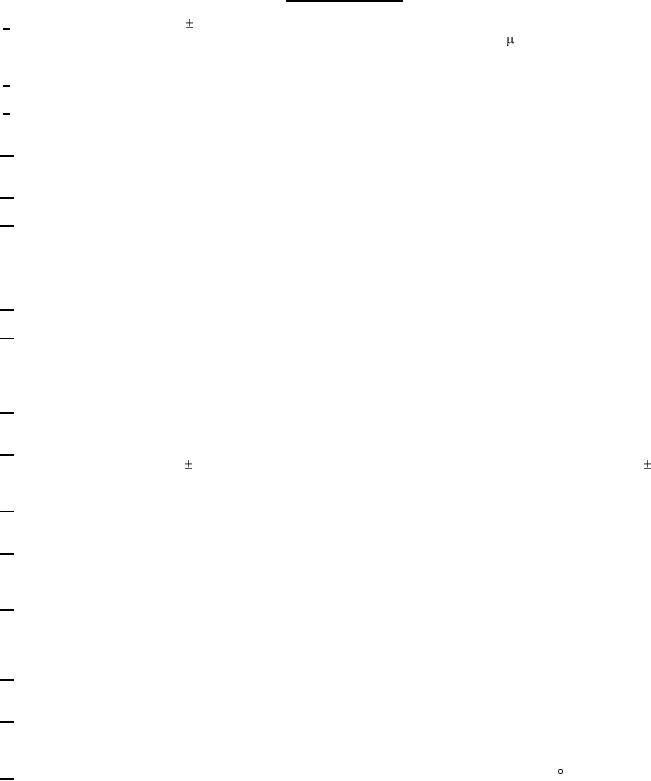
MIL-PRF-1/1624B(NAVY)
TABLE I. Testing and inspection - Continued.
7/
No spike or ripple shall exceed 5 percent of the average peak value of voltage or current. The time of fall of current measured
between 20 percent and 85 percent of the smooth peak value of current shall not exceed 0.05 s. Current pulse droop shall not
exceed 5 percent.
8/
An airflow of 20 cfm at 760 mmHg shall be directed on the cooling grooves.
9/
In handling and mounting the magnetron, care shall be exercised to prevent demagnetization. A minimum distance of 6 inches
(152.4 mm) shall be maintained between the tube and ferromagnetic materials or energized magnets.
10/ The tube's output is circular waveguide. Transformation from circular to rectangular waveguide shall be accomplished by a mode
transition. (See figure 2.)
11/ The combined sampling plan (percent defective) for conformance inspection, part 1, shall be 1.0, inspection level II.
12/ The tube shall be mounted in a resonance-free jig and vibrated while operating under the conditions specified herein in each of three
mutually perpendicular planes (see figure 1) with the vibration frequency varying between 10 and 2,000 Hz at a double amplitude of
0.06 inch (1.52 mm) or 5 G, whichever is the limiting value. The rate of frequency change shall be logarithmic and shall be such
that a complete cycle (10 to 2,000 to 10) will consume approximately 19 minutes. The test shall continue for 120 minutes in each of
the three planes. The tube shall be operated continuously throughout the duration of the test.
13/ After subjection to the specified test, the sample shall meet all requirements of conformance inspection, part 1.
14/ The sample shall be mounted on a test plate and subjected to 18 impact shocks of the acceleration and duration specified herein.
2
The velocity change shall not be less than 2.5 ft/sec . Three shocks shall be applied in each direction along each plane specified
on figure 1. No physical change shall result and the sample shall meet the requirements of conformance inspection, part 1,
mechanical tuning range, and resettability.
15/ Nominal tuner dial readings shall be determined corresponding to code letters specified herein (F1 through F5), and the tube shall
be marked as specified on figure 1. See figure 3 for tuning curve.
16/ With the tuning dial adjusted for a frequency of F3, an operation frequency of F1 will be obtained by counter-clockwise rotaion (see
t
figure 1) of the tuning shaft 11 1 turns. A frequency of F5 will be obtained by clockwise rotation of the tuning shaft 10
1 turns
from the F3 setting.
17/ The frequency obtained by turning the tuner to a given dial setting in one direction shall be reproducible within the limits specified
herein when returning to that same setting from the opposite direction after thermal equilibrium.
18/ The rf bandwidth, minor lobes, and stability shall be within the limits specified herein when a VSWR of 1.2:1 minimum is introduced
in the load at a distance of approximately 0.2 meter from the tube's output flange, the phase being adjusted for the worst spectrum
and instability.
19/ Stability shall be measured in terms of the number of output pulses missing, expressed as a percentage of the number of input
pulses applied during the period of observation. The missing pulses (MP) due to any causes, are considered to be missing if the rf
energy is less than 70 percent of the normal energy level. The VSWR shall be adjusted to that phase producing maximum
instability, and the MP counted during the last 3 minutes of a 15-minute test period.
20/ The torque required to operate the tuning shaft through the tuning range specified herein shall not exceed the maximum torque
specified herein.
21/ The tuner shall operate for at least the number of cycles specified herein. The tube shall then meet all the conditions of torque,
resettability, and mechanical tuning range at ambient temperature and shall not exceed amount specified herein. One cycle is
defined as a complete traverse from one end of the tuning range to the other and back again.
22/ With the cooling airflow specified herein, the temperature of the anode (see figure 1) shall not exceed 80 C above the ambient
temperature or the maximum specified herein.
4
For Parts Inquires call Parts Hangar, Inc (727) 493-0744
© Copyright 2015 Integrated Publishing, Inc.
A Service Disabled Veteran Owned Small Business